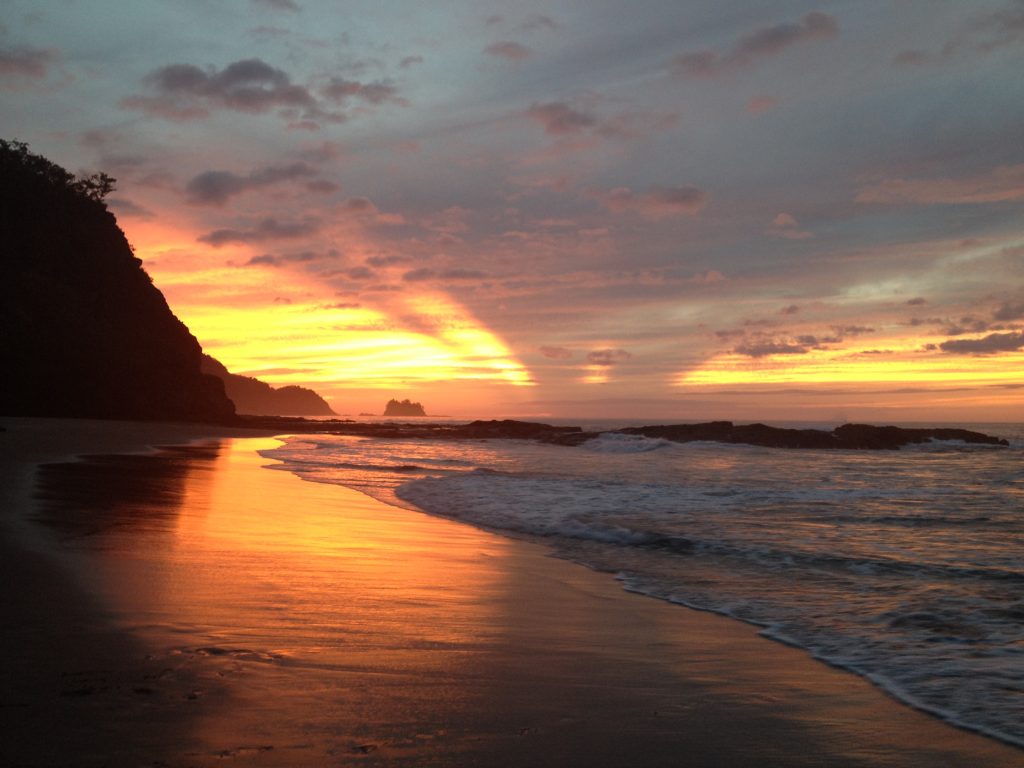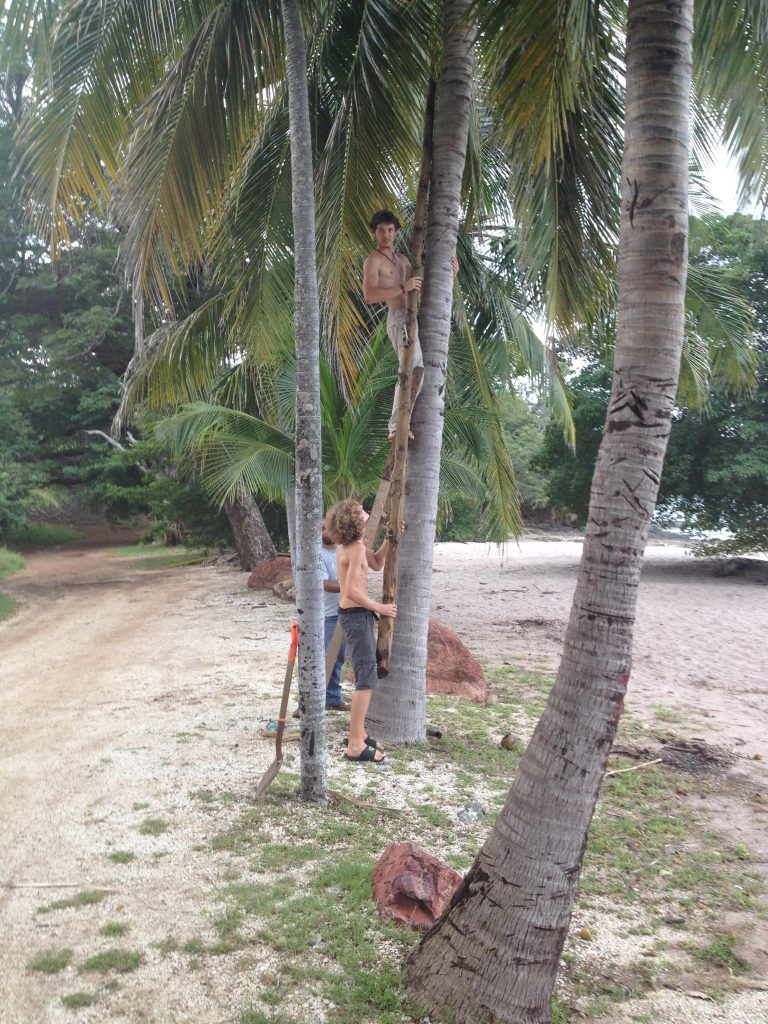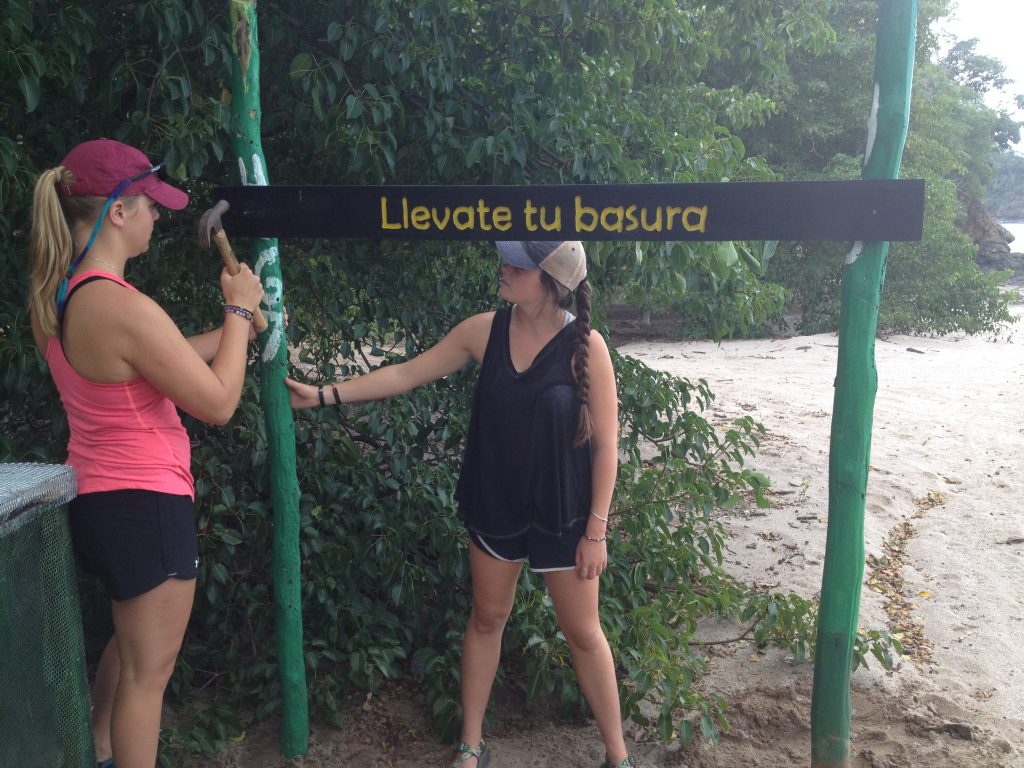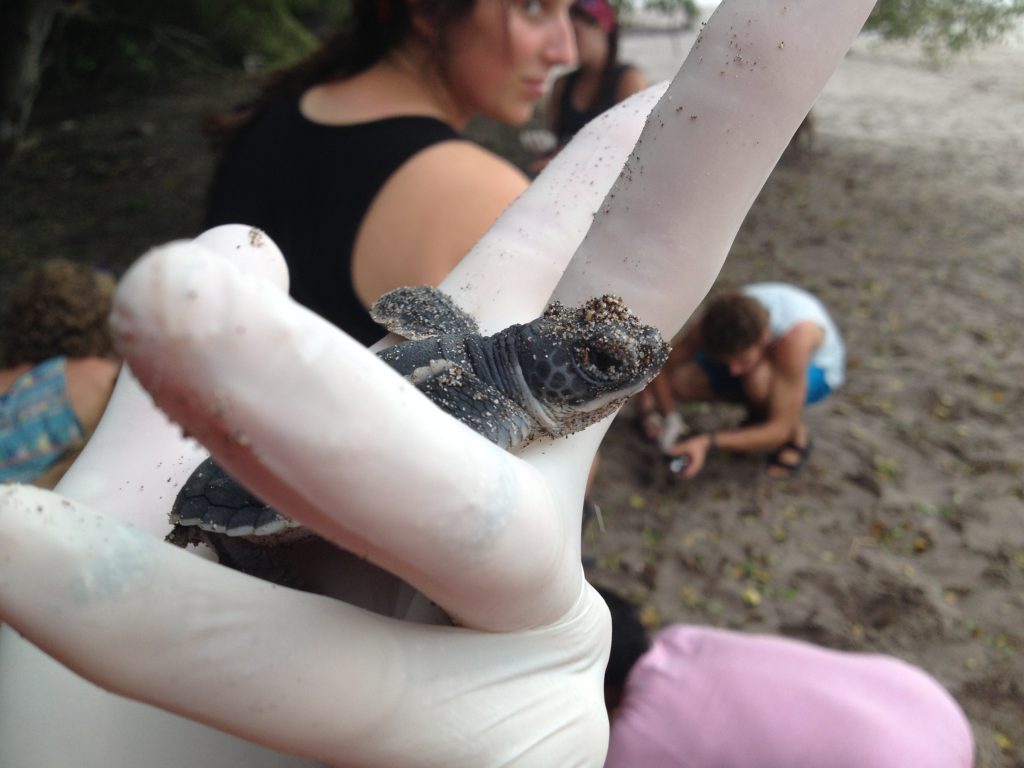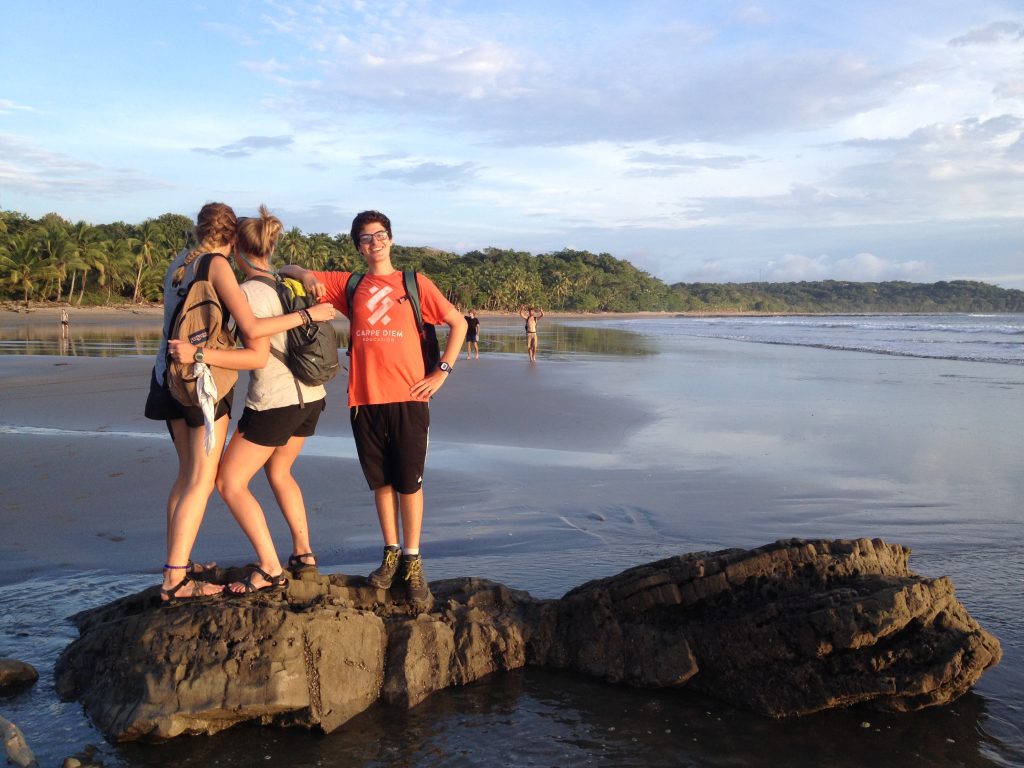Costa Rica- Pura vida!
After a 4:30 am wake up and around 14 hours of traveling, we finally made it to Costa Rica! We were welcomed with a huge fiesta at one of the homestays, accompanied by a drastic difference in food; Ribs and BBQ chicken instead of just the usual rice and beans. We were given a quick intro to CIRENAS, the program that we worked with for the next few days, and then we were introduced to the rest of our homestays, which were all within five kilometers of each other. Needless to say, after our long travel day we all slept very well.
Sunday was spent with our host families participating in their usual weekend activities. For most of us that meant spending the majority of the day at some of the beautiful beaches that this area of Costa Rica has to offer. The food was delicious and the people were more than welcoming.
We had what we thought was our last meals with our families (stay tuned for Hurricane Otto), packed up, and then headed to the close-by CIRENAS office. Our first activity with CIRENAS was a beach clean up. We did not realize how much trash there was until we started to pick it up. We also got to visit one of the programs free-range chicken projects. Later on a truck took our luggage and we walked for an hour and a half through a nature reserve and on a beautiful beach until we got to the remote Ranger Cabin. Ariadna and Daniela gave us presentations on the conservation work that CIRENAS is doing in this area, and also about the diverse local environment.
After another nutritious meal of gallo pinto, we walked back to Manzaneo Beach, where we did the clean-up. We would like to think that we could have walked all of the way to Santa Teresa, but after 4.5 km of walking on the beach we were thankful for the taxis that were waiting to take us the rest of the way. In the town of Santa Teresa, we learned about a local water management program called Water Keeper. Yepo, one of the project manager talked to us about the local issue of people not dealing with their gray and black water correctly. His solution is a biodigestive garden that naturally filters and cleans the waste water. After this, we walked to a house where they were storing the trash and recycling from all of the beach clean ups that have been done recently. While we sorted the plastic from the rest of the trash, we learned about this new project in the United States that takes photodegraded plastic that usually can not be recycled, and turns it into surfing materials such as leashes and wax scrapers. After the sorting we walked around the beach town of Santa Teresa and then began our taxi and long walk back to the ranger cabin. Along the way we enjoyed an incredible sunset and also some interesting birds and other wildlife.
Wednesday was a day filled with many different adventures. In the morning, half of the group went on a horseback riding tour of the local area while the other half went on a hike where we learned a lot about the local flora and fauna. On the hike we saw and learned about the mangroves in the area and we also saw an old turtle nest, which got us excited for our next project in Costa Rica. Hurricane Otto sent us a little rain in the afternoon, so the two groups were not able to switch places. Instead we rested and watched a movie, but later we went down to the beach and watched one of the most beautiful sunsets while we played Frisbee and swam in the refreshing water. After a dinner a small group of us decided to go on a night hike. When we returned from the hike we were met with the news that we were in a red zone from Hurricane Otto, and because we were in such a remote area that required crossing a lot of rivers to get to, we had to relocate. By 12:00 that night we had moved ourselves and all of our luggage back to our original homestays.
Happy Thanksgiving!!! We spent the morning with our homestays and then we all moved to a hotel for the night. We were all very thankful to be together and we enjoyed the big family style dinner that we had that night. We even got to watch some football. It almost felt like we were back in the States. Hurricane Otto was pretty much a no-show. We got a little bit of rain and some clouds, but no drastic weather.
After one night in the hotel, a van picked us up soon after breakfast to take us up north 4 hours to Guanacaste. This is where we were first introduced to turtle conservation concept by Kuemar. We didn’t fully understand how the program worked, until that night when we headed to the beach in 3 separate groups from 7-10pm and 10:30pm-1:00am.
Once down by the water we walked in the dark until we found tracks or evidence of a turtle preparing a nest to lay her eggs into. The process looks something like this:
-First one of the instructors will walk up and check the basic position of the turtle with a red light as not to scare her away.
-Second we wait until she has dug a hole, in which she can lay her eggs.
-Third one of us would reach under her from behind and carefully place the eggs into a bag to relocate them to a deeper hole measured out by triangulation nearby.
-Lastly we measured her length and width and took notes on her location of which beach, the time, her chip number etc.
The schedule at Kuemar includes less to do in the day time and most of the work at night. Around 10:15 we head to clean the beach of plastics, and measure the tracks of turtles on the beaches nearby. Again in 3 separate groups, until lunchtime which is 12-1. After lunch we have 3 hours of free time, till 4 when we head to the beach to uncover baby turtles after their 60 day hatching process! After pulling 30 to 70 turtles up to the surface, within 5 minutes they all start making their way towards the water where we bid them farewell. After this process we head back around 6 for dinner, always something delicious. We then break up into our same groups to head out for our night shifts to help make the turtles mysterious journey just a wee bit easier!
